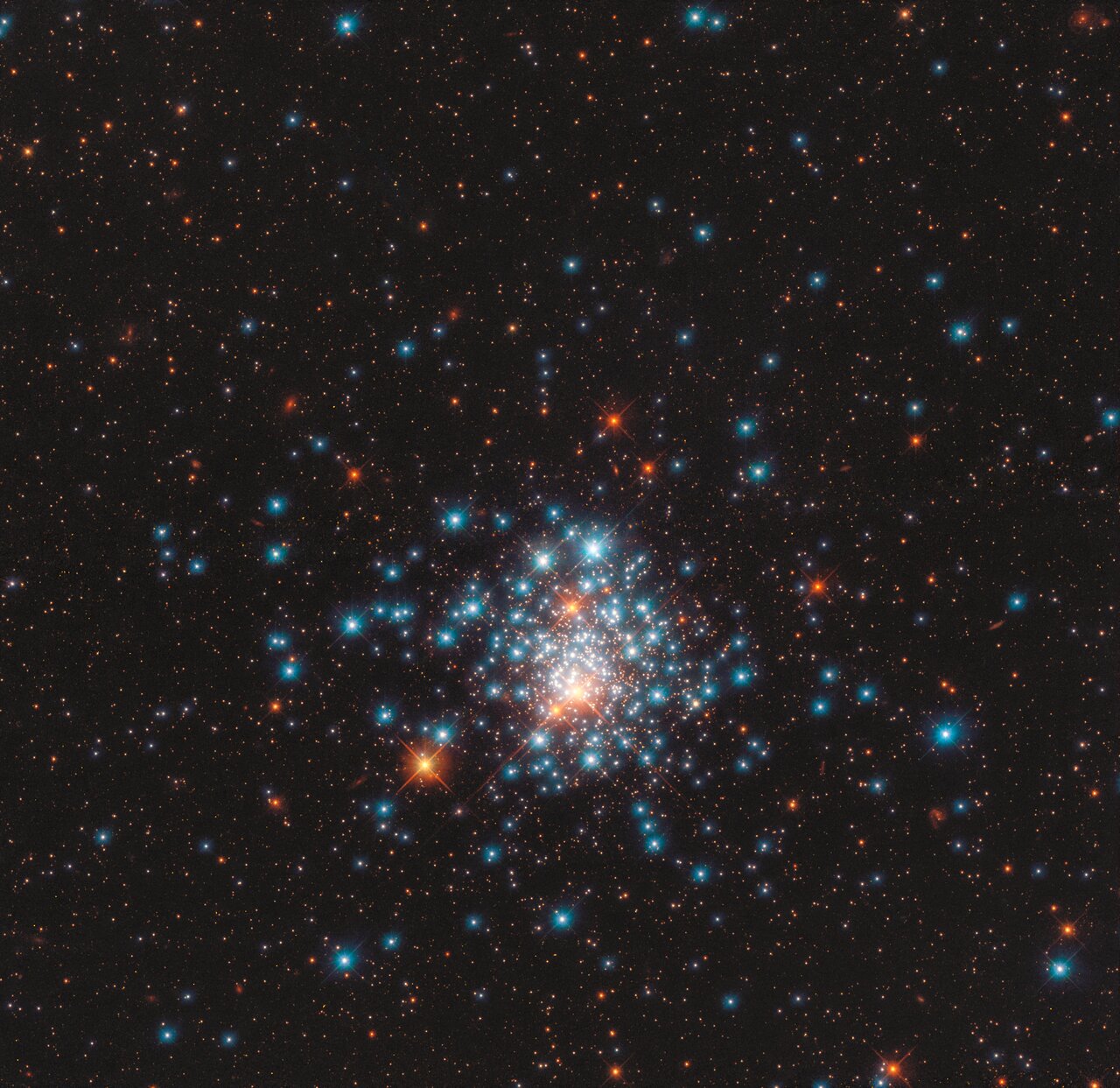Pocketful of Stars
ω
As I was searching for a theme
to guide me into novel jaunt,
enough of a creative beam
that would imagination haunt,
perhaps a scene sidereal
I hadn’t written on before
celestially ethereal
with research questions to explore,
at once a Hubble view appeared,
‘a pocketful of stars’ ‘twas named,
which to my fantasies adhered
and thence my motivation claimed.
I thought I’d have some fun with it
and give myself the latitude
to take a thought and run with it
in freer flowing attitude.
Suppose I had a pocketful
of starry wishes I could cast
along with rainbow rocket full
of colors for a canvas vast
to paint with palette huge in hues
galactic spheres that densely spread
where multi-versifiers choose
upon which pathway lyrics tread
and astral artists could cavort
amongst the stellar hills and dales
as dreams ineffable escort
the muses through prolific trails
of cluster globular expanse
(a cluster mouthful hard to say)
plus all my wishupons perchance
could dance to music far away,
what wondrous poems might emerge
while I would stride from star to star
in anapest or dactyl surge
from inspiration left ajar,
or maybe in pentameter
iambic in the metric line
to vary the parameter
as systems prosody define?
But let me brief description give
ere I meander off anew,
with words to help depiction live
in lieu of looking at the view.
A myriad of stars is flocked
like bees that swarm around a hive
which gravity together locked
in NGC One Eight O Five.
It’s found in Magellanic Cloud
the larger one, a satellite
that orbits home we’ve been endowed
with in our Milky’s solar site.
The stars in these are rarely born
at stages that are not the same.
Yet here the cluster they adorn
is hosting in its portrait frame
two populations quite distinct,
or so at least the group appears
since both are mutually linked
in their unusual careers
but formed millions of years apart
in separate creation streams
though clustered round a central heart
too closely to have planet schemes.
This astral pocket they compare
to bees that buzz nearby their nest
then flora’s pollination share,
those crucial creatures’ great bequest.
Bees play a more important role
than human beings used to know.
It’s said of food production’s whole
about a third to them we owe.
Thus keeping feet on mortal ground
I’ll sing a song stelliferous
of starry heavens garland crowned
or lullaby somniferous
so sorely needed in our realm
to spirits soothe in times of stress,
when madness seems to take the helm
and deeds demonic gain success,
unless an ‘over and above’
is active as a cosmic rule
with causes and effects thereof,
for fate may be nobody’s fool…
Meanwhile I’ll fling my wishes high
as starry verses I devise
forgetting not my earthly tie
and gaze upon the ceaseless skies.
~ Harley White
* * * * * * * * * *
Some sources of inspiration were the following…
Article and image ~ A Pocketful of Stars...
Article and image ~ Hubble Stows a Pocketful of Stars...
Some inspiration derived from the teachings and writings of Nichiren Daishōnin…
Nam Myōhō Renge Kyō means to devote our lives to and found them on (Nam[u]) the Utterness of the Dharma (Myōhō) [entirety of existence, enlightenment and unenlightenment] permeated by the underlying white lotus flower-like mechanism of the interdependence of cause, concomitancy and effect (Renge) in its whereabouts of the ten [psychological] realms of dharmas [which is every possible psychological wavelength] (Kyō).
The reason that we continually recite Nam Myōhō Renge Kyō
Image explanation: Many colorful stars are packed together in this Hubble image of globular cluster NGC 1805, located 163,000 light-years away in the constellation of Dorado. This globular cluster is a tight grouping of thousands of stars, found near the edge of the Large Magellanic Cloud, a satellite galaxy of our own Milky Way. NASA said it’s unlikely that the stars at the center will be orbited by planets, because they’re 100 to 1,000 times closer together than the nearest stars are to our sun. The striking difference in star colors is illustrated beautifully in this image, which combines two different types of light— blue stars, shining brightest in near-ultraviolet light, and red stars, illuminated in red and near-infrared. Space telescopes like Hubble can observe in the ultraviolet because they are positioned above Earth’s atmosphere, which absorbs most of this wavelength, making it inaccessible to ground-based facilities.

Credit: NASA / ESA / Hubble / J. Kalirai
| Table of Contents |
|